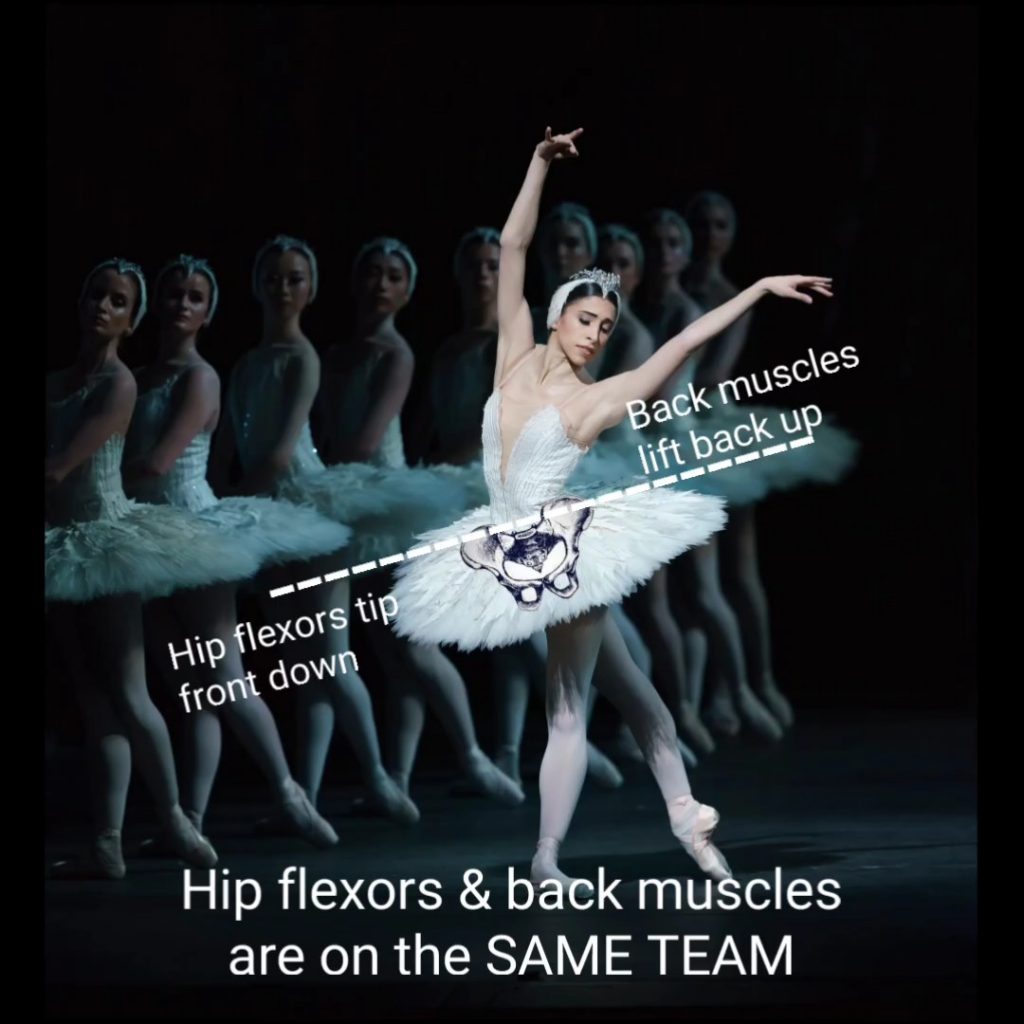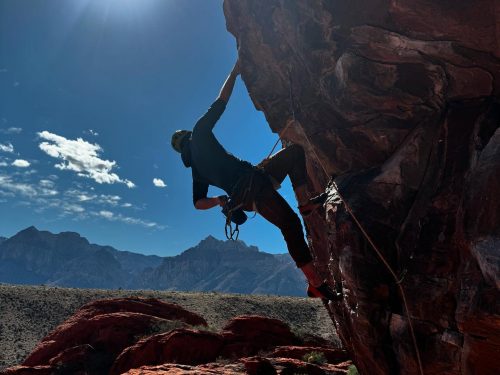Do you stretch? Foam roll? What about strengthening? Is there a clear answer that will work for everyone? Well, over the 16 years I’ve been a physio in Revelstoke, there’s been 2 main patterns that are the root cause for many people’s hip flexor tension. What it comes down to is “variety of movement”. Our body has so many options of ways to move, but often these options become limited from injury and repeated patterns with sport or work. Habits start reducing the variety of movement patterns we use. I also think most physio’s give strength exercises that are too hard for the person to learn a new pattern of movement, and the cycle they’re in continues on and on.
So here are the two most common movement patterns I see people rely on that reduce their variety of movement and play into their tight hip flexors.
1) Over dominant team of hip flexors and back muscles.
To visualize how this team works, let’s imagine wearing a classic ballerina tutu that reaches out horizontally from our pelvis in all directions. If the front of the tutu tips down, the back lifts up.

- So any muscles underneath the tutu in the front will pull it down. These are our hip flexors.
- Any muscles above it in the back will lift it up. These are our back muscles.
- Together the hip flexors and back muscles work together as a team to do the same movement of the pelvis.
- A second team does the opposite movement of the pelvis/tutu: lifts the front up and lowers the back down. This team is the abdominals in the front and glutes/hamstrings in the back.
So, when someone has tight hip flexors and low back muscles we can focus our Physiotherapy treatment to address this over-dominant team. Often it requires beefing up the strength of the opposite team of diagonals: the abdominals and hip extensors (glut max and hamstrings), while also releasing tension in the tight hip flexors and low back muscles.
My preferred strategy is to start with strength exercises for the abdominals and glut max/hamstrings team. These are usually quite specific to the person and require isolation of the desired muscle without involving the overactive team. The next phase directly targets the tight hip flexor muscle bands with a massage ball either at the wall or on the floor. I’ve found physio stretches to be ineffective for most people’s hip flexors. The tight fibers remain bound together until directly addressed with self massage techniques.
2) Are my tight glutes causing my hip flexors to tighten up as well?
The second movement pattern I commonly see in Revelstoke is when the hip external rotators are gripped tightly, pushing the femoral head to the front of the socket causing the hip flexors to work hard in order to balance the excess forces from behind.
With this pattern I again target the tightly bound muscle fibers with a massage ball for the gluts, NOT the hip flexors. In this situation the hip flexors are the victim, not the culprit. Releasing the hip flexors often only causes them to retaliate and tighten up more, because they’re needed to offset the overactive gluts. The physio exercises I give this group of people are again specific to the person, but often teach hip internal rotation, ankle plantar flexion with weight bearing through the big toe, and hip extension with glut max and hamstrings.
The key takeaway here is that our body is tremendously resilient and wants variety. The movement patterns I discussed here aren’t bad or wrong. The body just doesn’t feel as good when we use one strategy for everything we do. It feels best when we have many options of how to move.
If you want to learn more about which exercises will help your tight hips most, I’d be happy to dive into this in person. Please book in to see me for an hour Physio Assessment here in Revelstoke.




